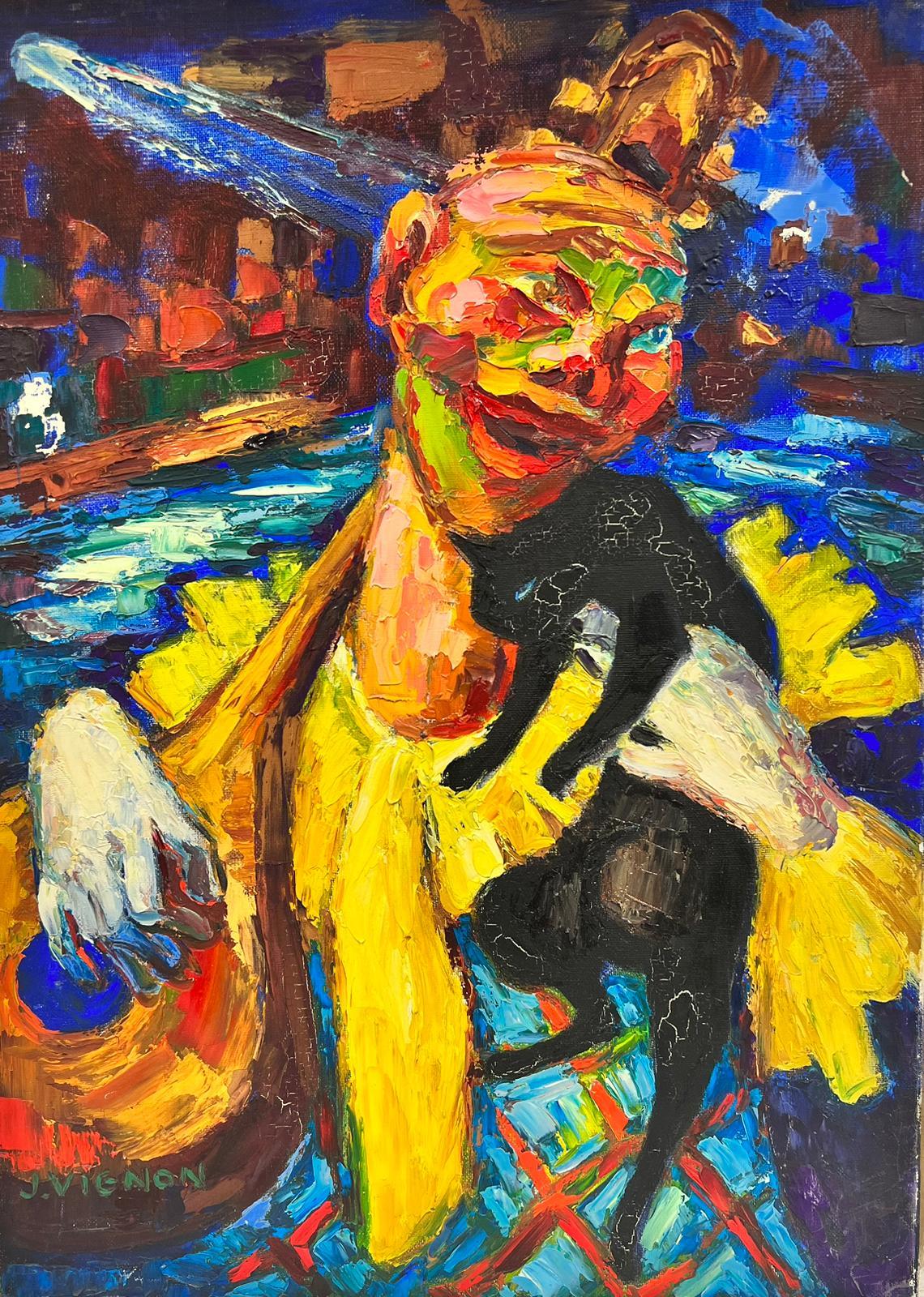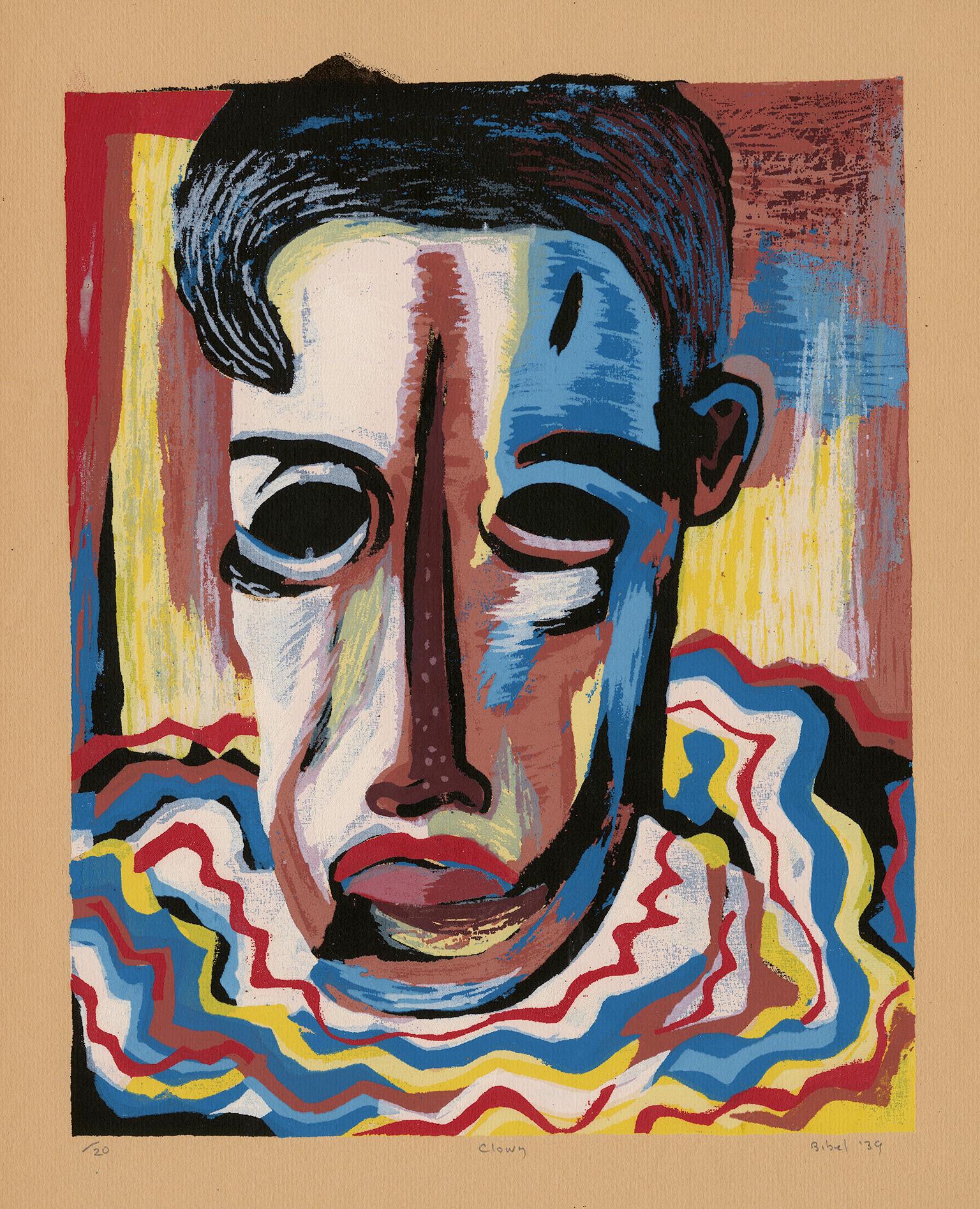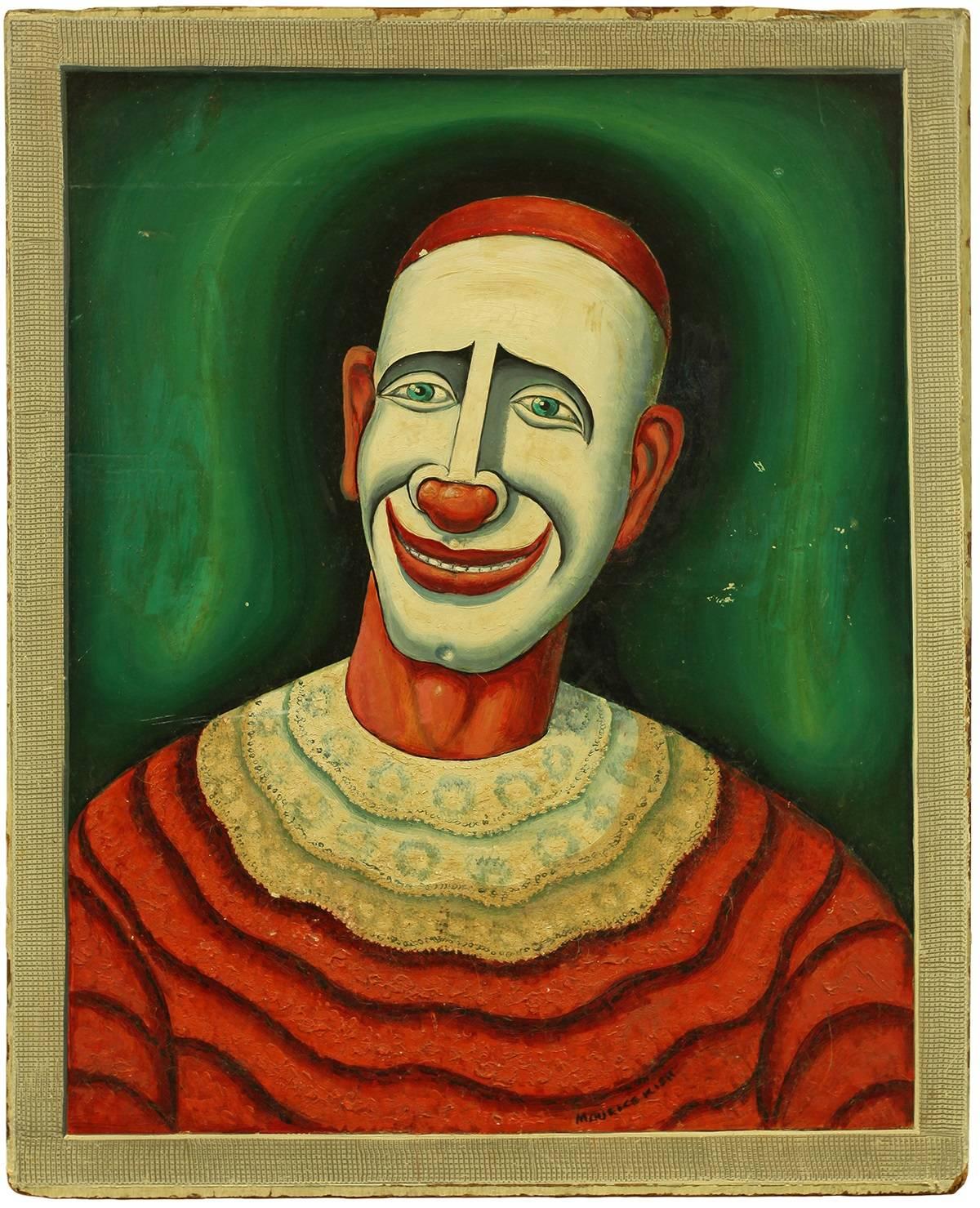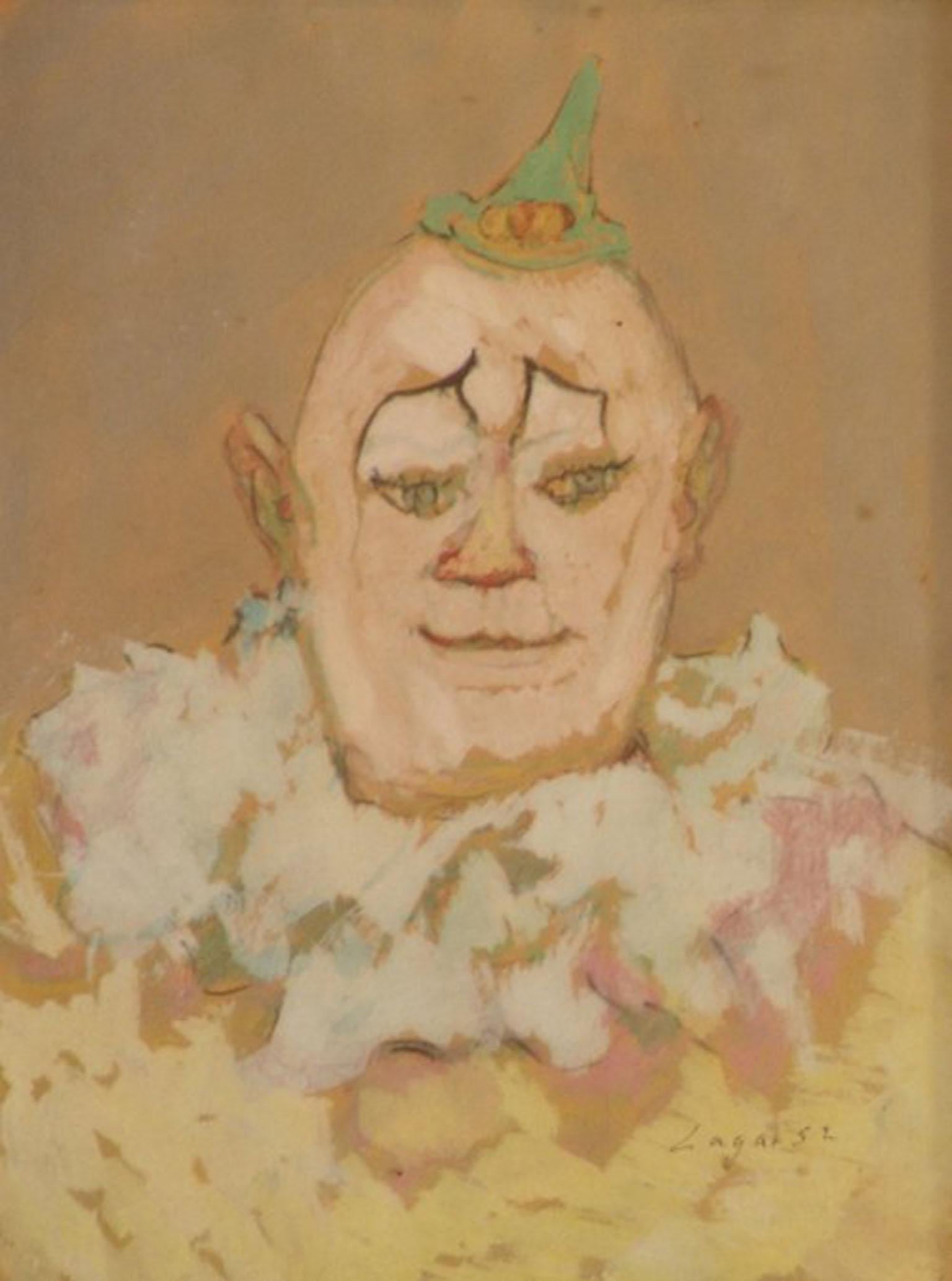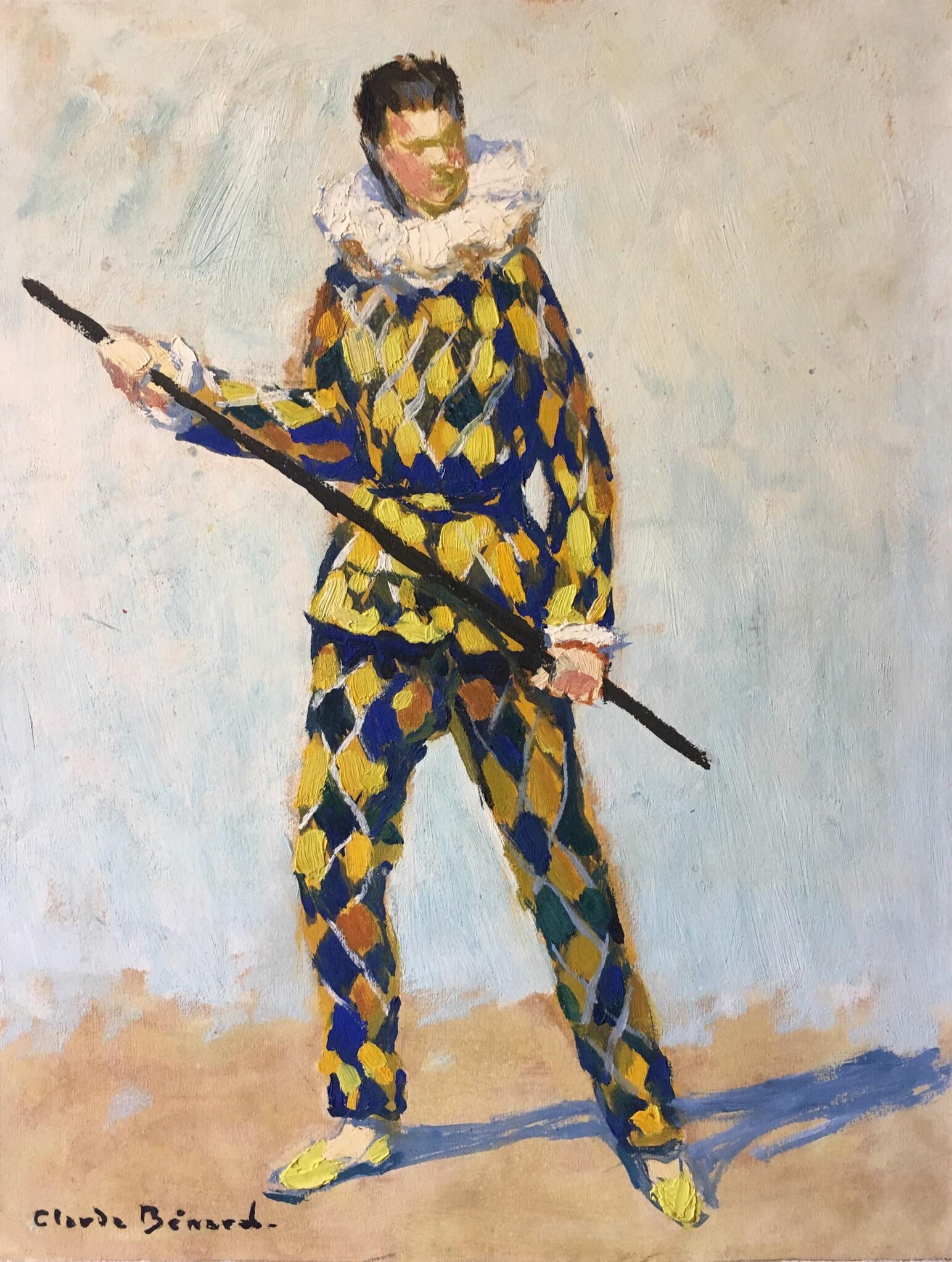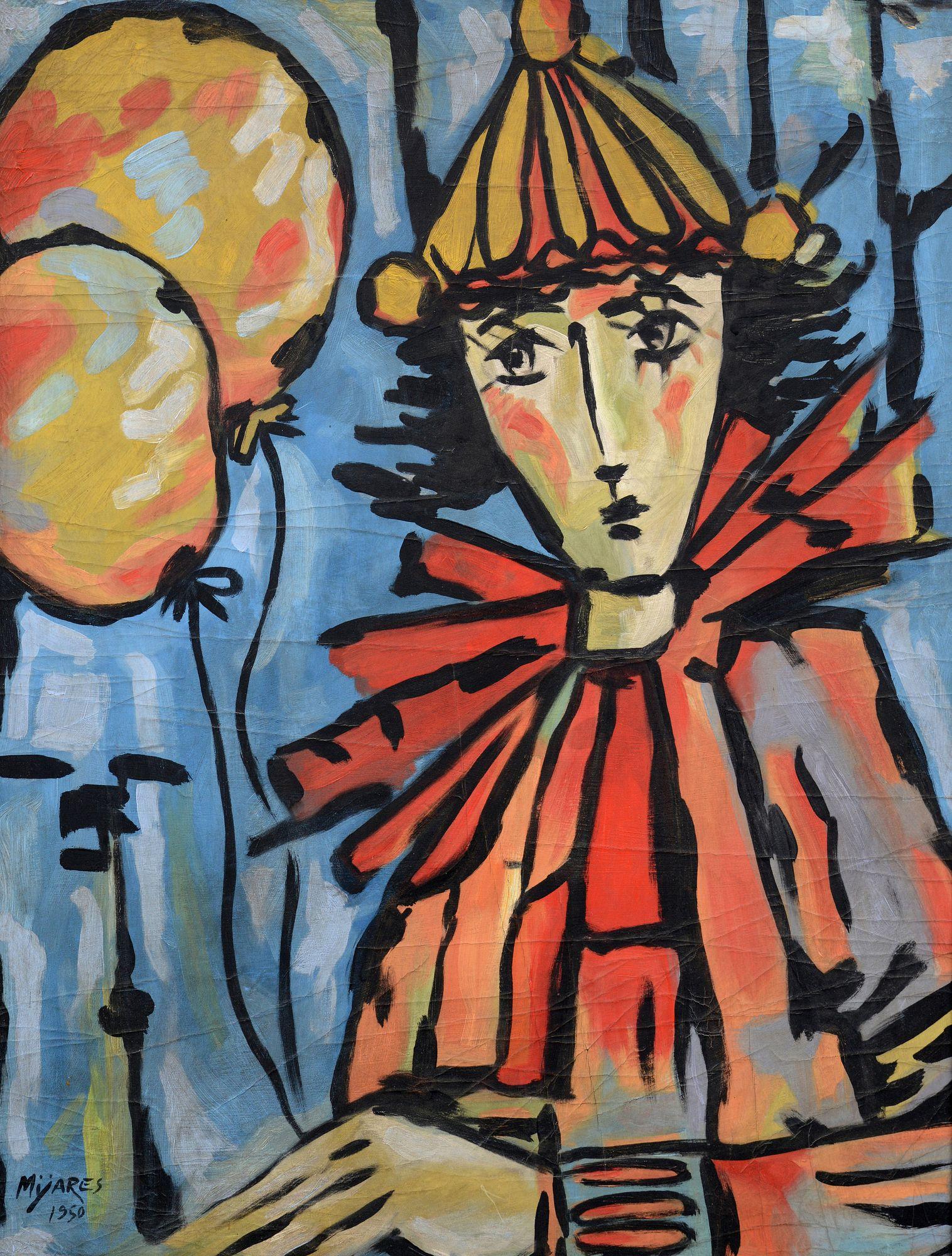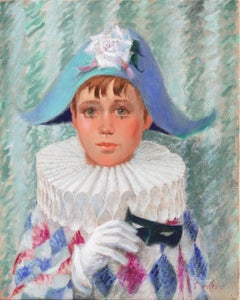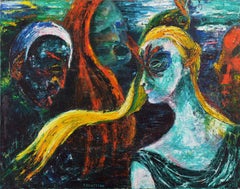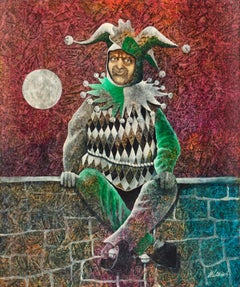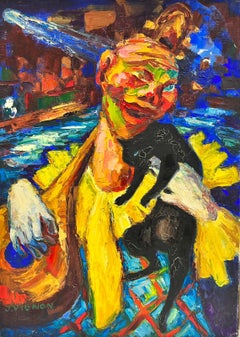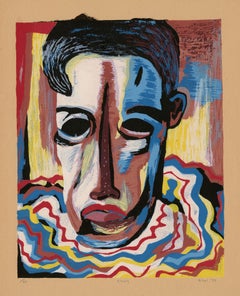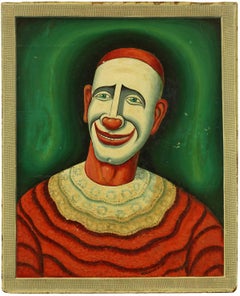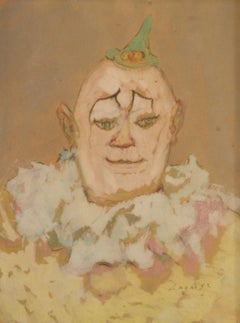Items Similar to 'Young Court Jester Holding a Puppet', Commedia dellArte, Post Impressionist
Want more images or videos?
Request additional images or videos from the seller
1 of 11
M. Dietrich'Young Court Jester Holding a Puppet', Commedia dellArte, Post Impressionist1963
1963
$5,500
£4,123.88
€4,781.03
CA$7,675.54
A$8,572.88
CHF 4,454.73
MX$104,400.39
NOK 56,584.99
SEK 53,319.37
DKK 35,672.31
Shipping
Retrieving quote...The 1stDibs Promise:
Authenticity Guarantee,
Money-Back Guarantee,
24-Hour Cancellation
About the Item
Signed lower right, 'M. Dietrich' (German-American, 20th century) and dated 1963.
A powerful, character-driven portrait of the young man, shown gazing directly towards the viewer. wearing white-face makeup and traditional costume and occupying a background of scumbled ruby and forest-green. An unusually fine study showing accomplished, bravura brushwork and a high degree of psychological penetration.
- Creator:M. Dietrich
- Creation Year:1963
- Dimensions:Height: 30 in (76.2 cm)Width: 23.75 in (60.33 cm)Depth: 0.13 in (3.31 mm)
- Medium:
- Movement & Style:
- Period:
- Condition:minor losses, minor restoration, minor corner bumping; unframed; shows well.
- Gallery Location:Santa Cruz, CA
- Reference Number:1stDibs: LU34410973662
About the Seller
5.0
Platinum Seller
Premium sellers with a 4.7+ rating and 24-hour response times
Established in 1982
1stDibs seller since 2013
739 sales on 1stDibs
Typical response time: 1 hour
- ShippingRetrieving quote...Shipping from: Santa Cruz, CA
- Return Policy
Authenticity Guarantee
In the unlikely event there’s an issue with an item’s authenticity, contact us within 1 year for a full refund. DetailsMoney-Back Guarantee
If your item is not as described, is damaged in transit, or does not arrive, contact us within 7 days for a full refund. Details24-Hour Cancellation
You have a 24-hour grace period in which to reconsider your purchase, with no questions asked.Vetted Professional Sellers
Our world-class sellers must adhere to strict standards for service and quality, maintaining the integrity of our listings.Price-Match Guarantee
If you find that a seller listed the same item for a lower price elsewhere, we’ll match it.Trusted Global Delivery
Our best-in-class carrier network provides specialized shipping options worldwide, including custom delivery.More From This Seller
View All'Young Pierrot', Arlequino, Harlequin, Costume Party, Fancy Dress Ball
Located in Santa Cruz, CA
Signed lower right, 'Fiedler' (20th century) and painted circa 1965.
A sensitively realized study of a young boy dressed for a costume party as Arlequino and shown gazing directly t...
Category
1960s Figurative Paintings
Materials
Oil, Canvas
'Harlequin with Guitar', California Modernist, Santa Cruz, University of Maine
By Jonathan Taylor
Located in Santa Cruz, CA
Signed lower left, 'Taylor' for Jonathan Taylor (American, born 1968) and painted circa 2000.
This listed California artist first studied art at the College of the Atlantic in Bal Harbor...
Category
Early 2000s Modern Figurative Paintings
Materials
Canvas, Oil
'Carnival Figures', New York Exhibited Oil, Mid-century Woman Artist, Theater
By Dorothy Ebenstein
Located in Santa Cruz, CA
Signed lower center, 'Ebenstein' titled verso, 'Seduction' and painted circa 1966. Accompanied by 1966 exhibition label from Barzansky Galleries, New York.
A substantial, Expression...
Category
1960s Expressionist Figurative Paintings
Materials
Canvas, Oil
Seated Jester
By Dan Wuthrich
Located in Santa Cruz, CA
Signed lower right, 'Wuthrich', and accompanied by the original certificate of authenticity.
Oil portrait of a jester dressed in black, white and emerald harlequin with bells on his collar and fool's hat, seated on a stone wall with the full moon hanging low in the coral and wine-red sky behind him.
Raised in a family that supported Wuthrich's interest in the arts, Dan Wuthrich has been painting since he was eight and at eleven had artwork featured in a Wisconsin newspaper article. After high school, Wuthrich continued his fine art studies at the Layton School of Art from 1954-1959 and at the University of Wisconsin-Milwaukee in 1961 taking courses in printmaking, English, speech and psychology. While maintaining his painting career, Wuthrich established a professional career as an engineer from 1965 to 1991, working for American Motors...
Category
Late 20th Century Modern Portrait Paintings
Materials
Oil, Board
'Blue Pierrot', Large Figural Oil, California Modernist, Woman Artist, Los Altos
By Janice Haefner
Located in Santa Cruz, CA
Signed lower right, 'Haefner' for Janice Haefner (American, 1919-2002) and painted circa 1960; additionally signed, verso, and with artist address.
This life-time member of the Pacific Art League lived in Los Altos...
Category
1960s American Modern Figurative Paintings
Materials
Canvas, Oil
'Toreador', California, Post Impressionist Oil, Santa Monica College
Located in Santa Cruz, CA
Signed lower left, 'Goetz' for Jack Goetz (American, born 1919); additionally signed, verso, dated 1998, titled 'Toreador', with artist information.
A dramatic figural study of a proud, young toreador shown seated, wearing an embroidered vest and gazing directly towards the viewer.
Goetz has painted and exhibited with success for many years and continues to paint at the age of 104.
Speaking of himself, the artist says:
"I studied arts and languages at Santa Monica College, taking classes in oil and watercolor painting, sculpture, ceramics, art history and music. At the same time, I studied with master painter Sergei Bongart. Because he taught many people in the movie business, I had fun meeting and painting with people...
Category
1990s Modern Figurative Paintings
Materials
Canvas, Oil
You May Also Like
Abstract Clown Character Playing The Tzouras Post Impressionist Signed Oil
By Josine Vignon
Located in Cirencester, Gloucestershire
Clown Character
by Josine Vignon (French 1922-2022)
signed on front and back
oil painting on canvas, unframed
canvas: 18 x 13 inches
Colors: Dark blue colors, yellow, red, green an...
Category
Mid-20th Century Post-Impressionist Figurative Paintings
Materials
Canvas, Oil
'Clown' — WPA American Expressionism
By Leon Bibel
Located in Myrtle Beach, SC
Leon Bibel, 'Clown', color serigraph, 1939, edition 20. Signed, dated, titled, and numbered '/20' in pencil. A fine, richly-inked, painterly impression, with fresh colors, on buff la...
Category
1930s American Modern Figurative Prints
Materials
Screen
Clown, Early 20th Century Playful Oil Painting on Board
By Maurice Kish
Located in Surfside, FL
This portrait of a clown by Maurice Kish is part from a series of carnival figures, circus clowns and carousel horses and riders that he did in the 30s and 40s. The artist uses a vibrant color palette and controlled brushstrokes to depict the subject in a realistic way.
The imagery of Maurice Kish (1895-1987), whether factories or carousels, reliably subverts expectations. His vision hovers just around the unraveling edge of things, where what is solid and clear becomes ambiguous. He is fascinated, often delighted, by the falling apart. This unexpected, fresh perspective results in oddly affecting pictures of a now long-gone New York.
Born Moishe in a town called Dvinsk, Russia (what is now Daugavpils, Latvia), Kish came with his family to New York when he was in his teens. The family settled in Brownsville, and for the rest of Kish’s life Brooklyn remained his home, though he moved from one neighborhood to another. He was close to his parents, who recognized his talent and supported his desire to become an artist.
Kish attended the National Academy of Design as well as Cooper Union. His fellow students included many other immigrants and children of immigrants who were particularly receptive to the Modernism coming from Europe. As his career progressed, Kish himself applied different strains of Modernism to different purposes. For him, the story was held above all else.
For years, Kish used the skills he acquired in art school to earn his living at a Manhattan glass...
Category
Early 20th Century Modern Portrait Paintings
Materials
Oil, Board
"The Clown", 20th Century Gouache on Cardboard by Spanish Artist Celso Lagar
By Celso Lagar
Located in Madrid, ES
CELSO LAGAR
Spanish, 1891 - 1966
THE CLOWN
signed and dated "Lagar 52" (lower right)
gouache on cardboard
10-5/8 x 8 inches (27 x 20.5 cm.)
PROVENANCE
Private French Collector
Cel...
Category
1950s Fauvist Portrait Paintings
Materials
Gouache, Cardboard
The Jester, Impressionist Portrait, Signed Oil Painting
By Claude Benard
Located in Cirencester, Gloucestershire
The Jester, Impressionist Portrait, Signed Oil Painting
By French artist Claude Benard, (1926 - 2016)
Signed by the artist on the lower left hand corner
Oil...
Category
Mid-20th Century Impressionist Interior Paintings
Materials
Oil
Jose Mijares Clown Painting
Located in Lake Worth Beach, FL
Artist/Designer; Manufacturer: Jose Mijares (Cuban, 1921-2004)
Marking(s); notes: signed; 1950
Materials: oil on canvas
Dimensions (H, W, D): 38.5"h, 28.5"w; 46.5"h, 36.75"w frame
Ad...
Category
Mid-20th Century Surrealist Figurative Paintings
Materials
Canvas, Oil
